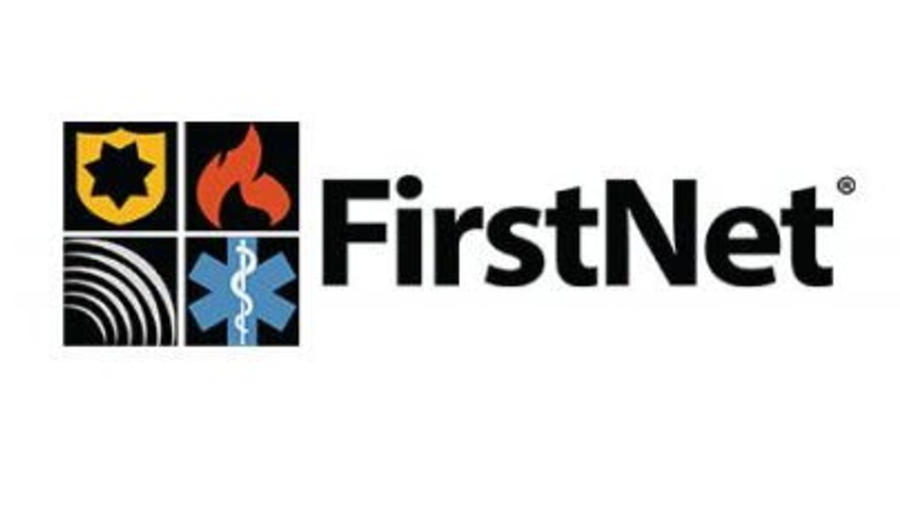Op-Ed: A conundrum — What will happen to FirstNet in Puerto Rico?

A conundrum is a mystery, a puzzle, an enigma. And in Puerto Rico many go unresolved for months, years and even decades. A big mystery looming in the horizon on the already debt-ridden government of Puerto Rico is the fate of the FirstNet broadband network, with its corresponding implications to the sustainability of our public safety/emergency communications infrastructure.
With the proposed sale of AT&T to Liberty Puerto Rico the Federal Communications Commission has to consider not only the inherent commercial elements of this transaction. They must also evaluate how does that transaction affect the public safety/emergency communications infrastructure in Puerto Rico, since the islands’ government “opted in” to be part of the nationwide FirstNet network.
As this piece is being published, the FCC is holding a quaint hearing at the University of Puerto Rico in Río Piedras, where a rather unknown picture of the current context of the communications infrastructure will be discussed.
We would not be surprised if there is little or no mention of our public safety/emergency communications infrastructure. That is for the news media to cover.
First, we do not know what AT&T’s plan regarding FirstNet is. What we do know is that they are selling many mobile phones to individual first responders promising first in line connectivity in a future emergency. The overarching goal of FirstNet should be to provide Puerto Rico with a resilient and redundant communications infrastructure that addresses interoperability challenges in the island. The reality is that FirstNet is much more than a marketing gimmick.
FirstNet is a public-private partnership between AT&T and the First Responder Network Authority, which is an independent authority within the U.S. Department of Commerce. The First Responder Network was tasked by Congress in 2012 to build a national broadband network to bridge the interoperability problems first responders have had in connectivity and expand their capacity to access a 20 MHz of a 700 MHz D-Block spectrum.
In other words, this spectrum is an already available “highway” for data, voice and video that has no traffic and should be used for first responder interoperability.
An article by the Washington D.C.-based blog Lawfare clearly explained how the Middle Class Tax Relief and Job Creation Act of 2012, which created FirstNet, gave the states and territories (back in 2017) the opportunity to “opt out” of the network project and build their own public safety network, that would meet FCC standards. The article goes on to note:
However, some states complained that the burden would be too high for them to create their own network. While FirstNet has funding to spend on the federal buildout, FirstNet does not provide funds to any state building out its own network. Additionally, states that opt out are responsible for maintenance of the network and potentially face penalties for not meeting requirements of the FirstNet network.
In that same year, another U.S. Department of Commerce agency, the National Telecommunications and Information Administration (NTIA) was tasked with providing states and territories with the State and Local Implementation Grant Program (SLIGP), a $121.5 million formula-based, matching grant program designed for the planning of a nationwide public safety broadband network.
Under the SLIGP, which was awarded before the FirstNet public-private partnership, the Office of Public Security Affairs (OASP, in Spanish) received a $1.4 million grant with a $358,160 local match.
As program documents show, in 2018 the OASP returned $885,136 which were unexpended or unused. In March 2018, NTIA issued a SLIGP 2.0 grant of $700,000 to the OASP. According to its June 2019 program reports, the OASP is working with planning and developing coverage gaps, but no other details are available.
It is rather ironic that in September 2017 the administration of former Gov. Ricardo Rosselló (D-PR) became the second U.S. jurisdiction to opt-in to FirstNet. A few days later, Hurricane María completely obliterated what was already a weak and disparate public safety/emergency communications infrastructure, along with the overall private telecommunications system.
As of the writing of this piece, the particulars of the FirstNet plan for Puerto Rico and the data to be compiled about the needs in this archipelago are unknown. Surely the information recollected before 2017 is now useless with the aftermath of both storms.
Self-fulfilling prophecy The aftermath of Hurricane María was a self-fulfilling prophecy of how the public safety/emergency communications system would fail. The element of isolation from the U.S. mainland had been considered and resulted in days of no communication.
For many years, these communications systems were not properly attended to, marred by continued obsolescence, scarcity of experienced staff and lack of systems maintenance and updating by government officials.
Back in 2010, FEMA approved a plan started by the authors in 2006 in which the government of Puerto Rico could address the interoperability situation. The document revealed particularly that:
In a major incident, the use of disparate systems by Commonwealth agencies and jurisdictions may hamper interoperability among local responders. Incoming responders will also require interoperable communications for coordination with Commonwealth counterparts. Emergency response agencies in Puerto Rico do not maintain substantial caches of radio handsets. It is expected that FEMA will be asked to supply up to 1,755 LMR handsets to enable interoperable communications among Commonwealth personnel, and between Commonwealth and incoming responders.
For most elected and appointed Commonwealth and local government officials to take care of the still prevalent problems regarding its public safety/emergency communications system has not been a priority, and we don’t know if it does.
In our experience this type of public investment is something that the public cannot witness and does not translate into electoral votes. The aftermath of Hurricane María has proven that building a resilient and redundant public safety/emergency communications infrastructure in the island is our most prescient issue, requiring adequate and competent oversight over this part of the recovery.
On a daily basis the public questions why does it take so long for first responders to respond to an everyday emergency? Why is there so much dissatisfaction with the 9-1-1 dispatch? As of August 2019, The New York Times reported that the unionized 9-1-1 employees have indicated that the system is not ready of a disaster.
Nonetheless, we need to qualify their answer.
What is a public safety or emergency communications system?
A public safety or emergency communications system is different from the overall telecommunications apparatus that is used by everyone fueling their daily need for mediated interactions with friends and acquaintances via their mobile phone.
Public safety or emergency communications are the backbone of what emergency responders, firefighters and law enforcement need to respond to a disaster, an incident or an accident.
Such a system is anchored by Land Mobile Radios (LMR) which are mostly handheld portable radios, mobile radios, base stations, a network, and repeaters. (Colloquially in Puerto Rico we would call them in Spanglish “walkie talkies.”)
LMR’s are terrestrially based, wireless communications systems to support voice and low-speed data communications that provide high security standards, which commercial cell networks cannot provide.
Therefore, for adequate response to an accident or major incident, first responders cannot depend on their cell phones. We all would agree that responding to a major fire in the remote town of Castañer in Lares could not be managed using cell phones. There is not enough bandwidth and security.
During the 9/11 disaster in New York City, LMRs operated on thousands of different networks, brands and did not have interoperability.
Today in Puerto Rico our first responders still operate with disparate LMR systems in different spectrum frequencies, have different encryptions and newer LMRs are not compatible with older radios.
Worst of all, the LMR systems do not follow specific standards, and are customized by vendors or agencies limiting any access or compatibility. That means that for any incident or accident, police cannot contact an ambulance by radio. The relay process would take forever and if they stand an incident command post every agency still has to bring additional units to share with other responders.
Thus, FirstNet was created to solve “the interoperability issue between agencies by operating on a uniform standard.” So far, we could not find any evidence of progress and with the impending AT&T departure, there is no public information as to how the transition will be managed.
A report prepared in February 2018 by the Department of Homeland Security (DHS), Office of Emergency Communications (OEC) Interoperable Communications Technical Assistance Program (ICTAP) indicated that:
Given the continuing evolution of emergency communications capabilities, everything and everyone is becoming more interdependent due to the convergence of technologies. As such, public safety must coordinate efforts to achieve operable, interoperable, and reliable communications across jurisdictions and disciplines utilizing the new communications capabilities and avoiding stove-piped systems.
In 2010 we proposed to implement a Puerto Rico Interoperability System (PRIS); “an island-wide multi-band voice and data communications system that will enable all public safety and supporting agencies to operate on a shared Project 25 (P25) compliant trunked platform.” That was the plan then and should be the plan to follow today.
Access to the real FirstNet network is of critical importance to Puerto Rico considering that such an overarching infrastructure cannot be independently financed by our government and there are no other federal funds to finance it. Nonetheless, it is critical that any plan considers reaching some interoperability with the public safety/emergency communications system, including the 9-1-1 and LMR infrastructure.
Although we might need to ask FCC as to where does public safety/emergency communications fit into the recent proposed rule giving “funding for fixed broadband networks with speeds up to one gigabit and for 4G LTE and 5G mobile broadband” for Puerto Rico and the USVI? A Dec. 9 deadline for this “Uniendo a Puerto Rico Fund” and the “Connect USVI Fund” has just been announced.
But before we ask for anything from the First Responder Network Authority, NTIA or AT&T, the Puerto Rico Department of Public Security (DSP) has to spearhead and execute a sensible plan to achieve true interoperability for our public/emergency communications system.
We have referenced official documents they can use and follow. Can they do it? At this juncture we are not sure.
-

Author Ferdinand Cedeño, P.E. is an experienced telecommunications engineer and professor. -

Author Jeffrey Quiñones is a Puerto Rico-based public affairs and homeland security professional.













BRAVO!!! Firstnet is a scam of historic proportions. Congratulations on your courage wisdom and faith!